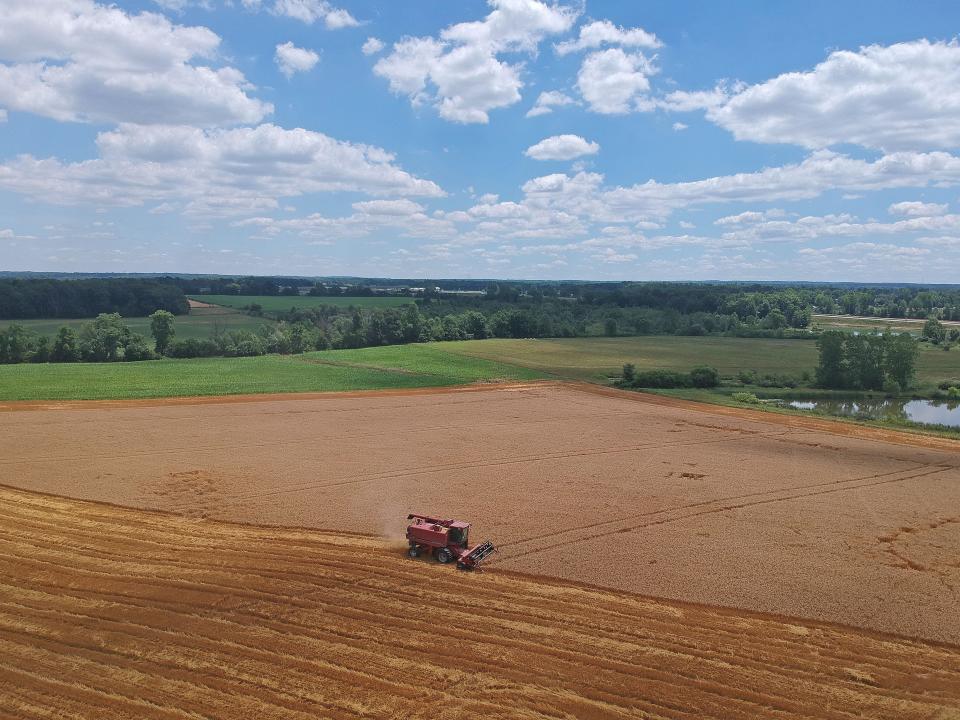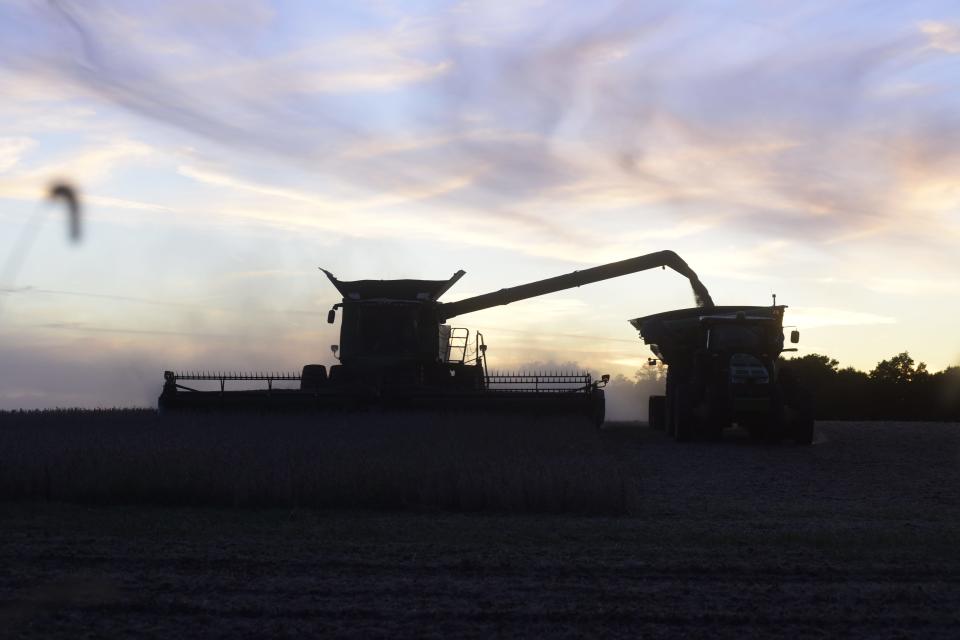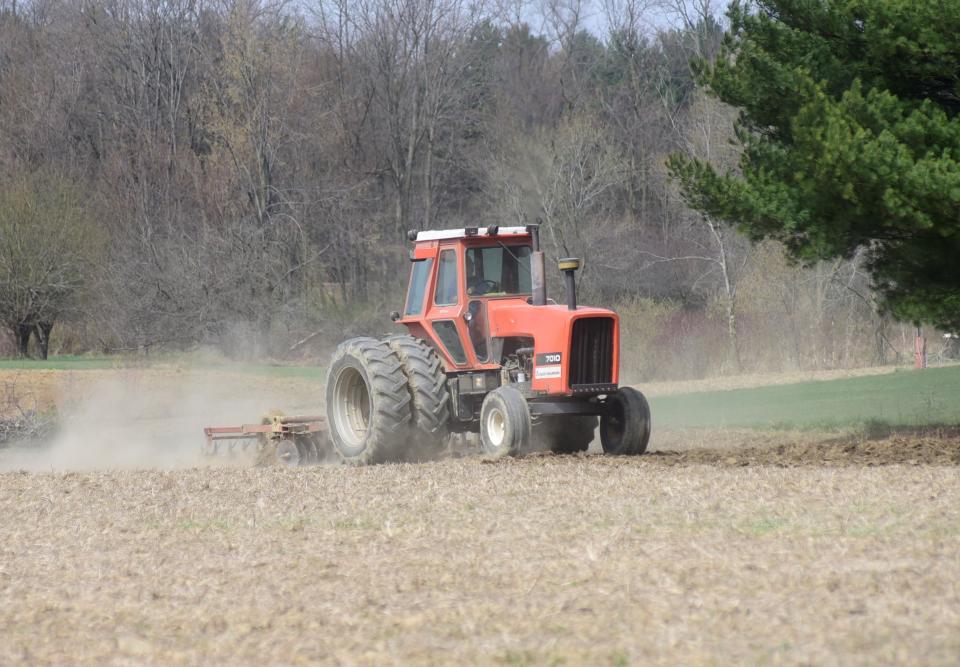'It doesn't look good': Forecasts show net farm incomes may severely drop again this year
Farmers are bracing for what could be the largest single-year reduction in profitably ever recorded.
Net farm income across the country is forecast to drop this year by 25.5% — 27.1% after accounting for inflation — according to an income forecast released by the U.S. Department of Agriculture.
It would be the second year in a row of severe profit reductions after farms nationwide experienced a 16% drop in net incomes from 2022 to 2023.
Ohio farmers are not immune, according to Jason Hartschuh, a field specialist for the Ohio State University Extension.
"This is a real concern," Hartschuh said. "Especially for grain farmers."
'World trade has really backed off'
The latest blow to farm incomes has been slashed market prices, said Mark Metzger, a Richland County farmer.
"Commodity prices have been just about cut in half of what they were," Metzger said.
In its most recent monthly agricultural market review, Nationwide Mutual Insurance Company listed for clients the 12-month price drops of relevant commodities: minus 50% eggs, minus 36% corn, minus 20% wheat and minus 19% soybeans.

"The value of our product that we raise is dwindling," Metzger said. "Our biggest problem with the grain markets is that the world trade has really backed off."
Global ag markets are affected by climate, shipping costs, politics as well as supply and demand. Prices change with events that take place on every continent.
Right now, most countries are avoiding American commodities because they're considered too pricey.
"There are many challenges in the export market that are making U.S. grain more expensive — especially in Asia — than South American grain," Hartschuh said. "One of those challenges is shipping costs with drought conditions creating a water shortage in the Panama Canal, and the issues around the Suez Canal raising the cost of grain leaving our gulf ports."
'It all comes out of the farmer's pocket'
Before they can even consider selling their commodities, farmers have to spend a lot to grow the grains, meat, milk, eggs and other produce they take to market.
Farm input costs include seed, fertilizer, herbicide, pesticide, as well as the fuel it takes to plant, plow, treat and harvest each field.
And that's only the biological expense without considering requirements like insurance and repair of old machinery.
To improve their operations, farmers aspire to purchase new equipment, make capital improvements to their lands and buildings, and even buy new ground.

If they're lucky, they'll pay themselves a living wage with whatever's left over.
"These people are feeling the crunch," Metzger said. "It all comes out of the farmer's pocket."
November: Young farmer wrapping up what could be a record Ohio corn harvest
'We'll have to tighten our belts'
Although the potential 2024 income declines look bleak, it's partly because they're being compared to "record highs" that farmers saw on 2022 incomes.
The USDA report shows that farms countrywide are expected to bring in $116.1 billion by the end of 2024. Last year's net farm income was $155.9 billion, and in 2022 the number was $185.5 billion. It was only $119.1 billion in 2021. The five years before that were all below $100 billion.

"We've been riding a high the past few years," Metzger said.
Of the record $185.5 billion in profits in 2022, Ohio's 76,500 farms brought in $5.78 billion. The Buckeye state ranked No. 10 in the country that year in terms of net farm income. California was first with $20.6 billion, Iowa second with $15.36 billion and Texas third with $12.75 billion.
Nationwide's market review reminded clients that the 2024 projections are still higher than the average of the 15 years leading up to the pandemic.
After last year, though, stepping down from nearly $156 billion to only $116 billion could feel enormous.
"The drop of roughly $40 billion would be the largest year-on-year dollar drop in farm netincome on record," the review reads.
No matter what happens, Ohio's farmers will still put seed in the ground this spring and hope for the best.
"Farming's a roller coaster," Metzger said. "It doesn't look good right now. I guess we'll have to tighten our belts."
ztuggle@gannett.com
419-564-3508
This article originally appeared on Mansfield News Journal: US net farm income forecast to drop in 2024 by 25.5%
